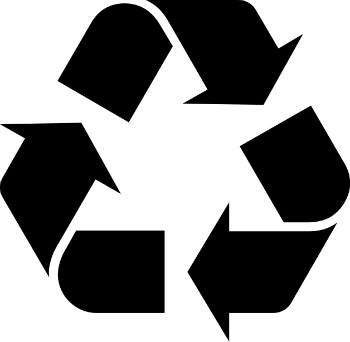The recycling is a way to reuse the raw materials that are discarded. In this sense, recycling means reducing the amount of waste from products consumed by man.
The term “Recycling” comes from the English language in which ” re ” means to repeat and ” cycle ” corresponds to cycle. Therefore, recycling is “repeating the cycle”.

Since the 70s, the concern with the amount of garbage produced by modern man, aroused the interest of biologists, ecologists and scholars in the area about the problems caused by environmental pollution, as well as the disposal of materials that supposedly could be reused.
In France and Germany, for example, recycling is the work of the private initiative, that is, the packaging manufacturer is considered responsible for the disposal of waste. Thus, when the citizen buys a battery he must take the old one for exchange.
Recycling in Brazil
The Recycling process in Brazil goes back more than 100 years, since the first industries to reuse the raw material were the cellulose industries. Over time, the concept has expanded and today recycling is a theme that is part of environmental and citizen awareness.
Although the recycling system is punctual, that is, it does not occur in all Brazilian municipalities, in the country, the prefecture of seven cities provides the selective collection service to 100% of households, namely:
- Itabira (MG)
- Santo André (SP)
- Londrina (PR)
- Santos (SP)
- Curitiba (PR)
- Goiania (GO)
Recycling and Selective Collection
The Selective Collection , nowadays, is an ecologically recommended way to the populations, since its function is to recycle the excessive amount of material discarded by man.
For this, there are recycling stations (which, among other things, receive, for example, used oil); as well as the separation of different residues, disposed in colored bins, where each color means a type of product to be discarded.
Thus, blue is used for papers and cardboard; the green to glasses; the red for plastics; the yellow to metals; the brown for organic waste; the black for wood; the gray for materials not recycled; the white for hospital waste; the Orange for hazardous waste; and purple for radioactive waste.
The main forms of selective collection are:
- Voluntary Delivery Stations (ENP): disposed in some strategic places in neighborhoods, in which the citizen deposits their waste in the containers available for the different types of waste.
- Exchange Stations: Here the citizen takes his waste and exchanges it for some good. For example, there are stations where citizens get soap as long as they take their used oil.
- Door to Door: In this model of selective collection, workers collect waste in neighborhoods left by residents on a certain day of the week.
- Internal Selective Collection Program (PIC): In partnership with the association of garbage collectors, this program is carried out in public and private institutions
Selective Collection is closely related to Environmental Education in that it arouses the interest of the communities about the problems of waste, consumption, pollution and environmental damage.
Advantages of Recycling
- Decrease in water, soil and air pollution
- Reduction of progressive waste accumulation
- Reuse of materials
- Improvement of the population’s quality of life
- Job creation
- Formation and development of ecological awareness
- Enhancing public cleanliness in cities
- Social and environmental responsibility
- Rational use of natural resources
Recycling, Art and Crafts
In addition to being reused and transformed into new packaging and products, the concept of recycling extends to art and crafts, giving greater value to the artistic product since today, the watchword is “reuse”.
In Brazil, the artist who stood out with the theme of Recycling was Vicente José de Oliveira Muniz, better known as Vik Muniz , since he developed an artistic work with garbage collectors from the Jardim Gramacho landfill in Duque de Caxias in the state of Rio de Janeiro. January focusing on the theme of sustainability .
Thus, the plastic artist held numerous national and international exhibitions and, in addition, in 2010, his work with the collectors was transformed into the documentary entitled “Lixo Extraordinário” .
Trivia: Did you know?
- Every 50 kg of recycled paper prevents a tree from being cut down
- For each ton of reused paper, about 20 trees are saved.
- The same paper can be recycled 7 to 10 times.
- Plastic bags, supplied in supermarkets, take 450 years to decompose in the soil.
- An aluminum can takes 80 to 100 years to decompose.
- Glass can take a million years to decompose.
